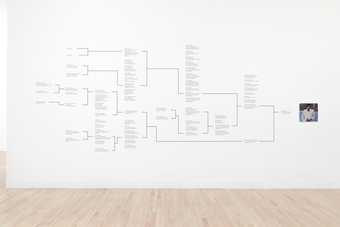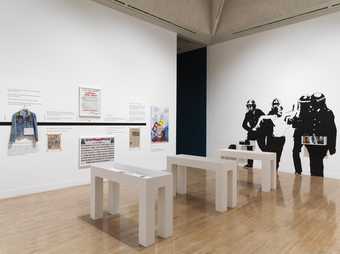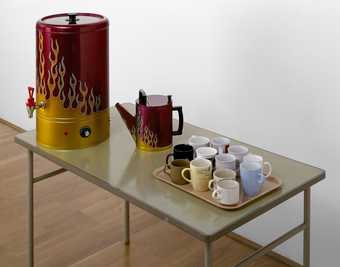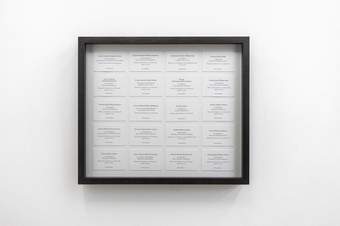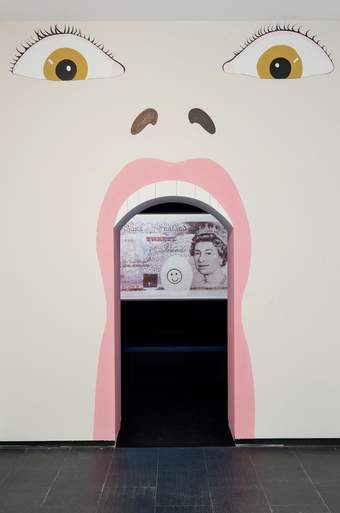Jeremy Deller talks about wall drawing called The History of the World, a sort of mad-professor's mind-map of the history of Britain through music; and a film called Memory Bucket that he made during a visit to Texas which explores American paranoia.
Jeremy Deller: For this exhibition I am showing The History of the World which is a wall drawing, and a film called Memory Bucket and those are the both works that I showed in 2003. The History of the World is basically the idea behind a piece of work I did called Acid Brass which is for a brass band to play acid house music. It’s the justification for it basically about why the project would work and why I thought it was important and it’s about the relationship between music and social history and politics and it’s really a history of Britain through music, in effect it’s about social movements and musical history and how they relate. So for example on the diagram, on the mind map I suppose you would call it, the way the brass bands are related to the Trade Union movement, the way they are related to the miners’ strike and civil unrests because of that, and then the acid house movement very quickly became part of media legend really and the hysteria around acid house because of the drugs scene, and then there is the whole tradition of folk music and then the north of England as well and how they relate to both musical forms. So there are all these connections between the two and also about public space and ownership of public space and civic pride and music in public and music for free so there are a lot of ideas basically going on I like to think in that piece. Well the film, I daren’t…I would hardly call it a documentary because it’s so poorly made by myself but it is a film about Texas and I spent ten weeks there and it was just me filming people I bumped into but also people I wanted to meet in the States, and just talking to them and from those conversations building a film out of it basically, some sort of narrative, even though its not a traditional film in that respect, especially with the end which is a film of 3 million bats leaving a cave. But it is about a moment in time really in Texas but also about the history of the State and the fact that it’s about sieges and siege mentality as well but in terms of professional pieces of film making it’s really not up there, it’s more like a video diary or it’s really the equivalent of what a sketch would be to a painting, it’s more of a sketch really than a fully formed painting. I am much happier doing something that leaves a trace maybe, that isn’t a massive, monumental piece of work and maybe just exists in people’s minds or people being told something, that’s always the kind of art I was interested in anyway, I suppose that’s what conceptual art is effectively. It was a great experience to win the Turner Prize I have to say, it was one of the better things I have done and especially for my parents I think for them it was the best thing I had ever done. I can’t really top it. Things did change for me because unlike a lot of artists that win, some artists that win are already very successful and very rich and they have this massive profile or whatever, whereas I didn’t have any of that so I think for me I just got a promotion really. I got an upgrade in the art world.

